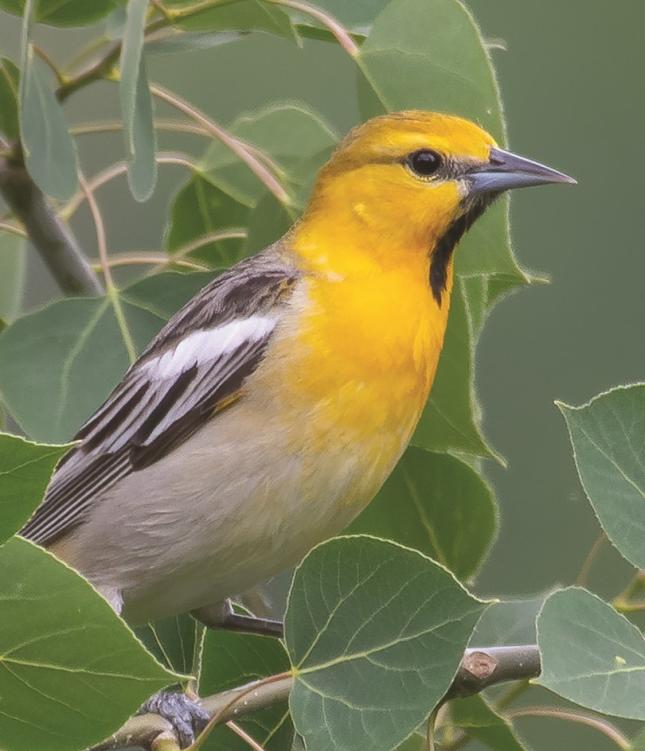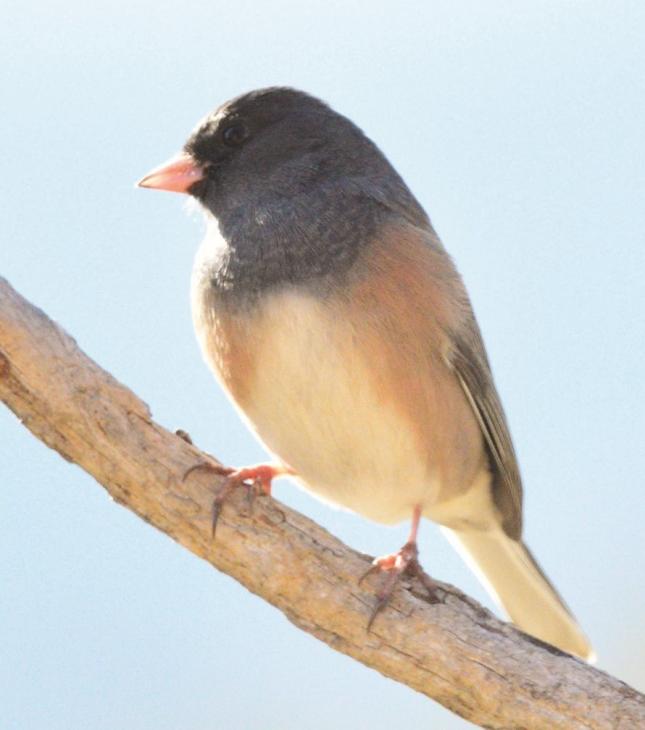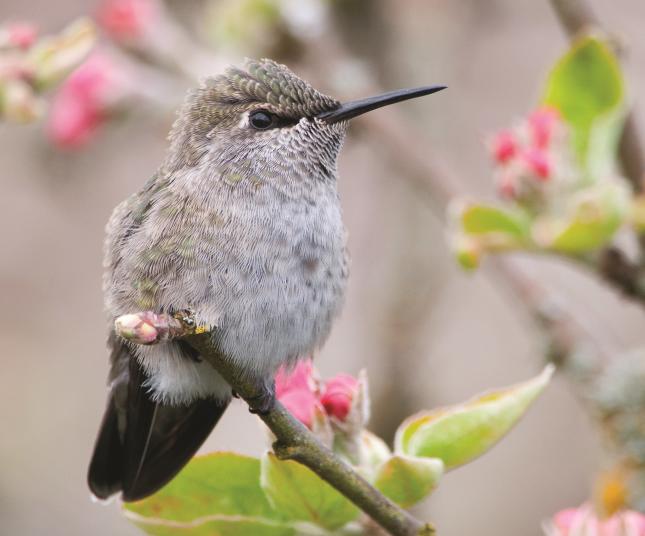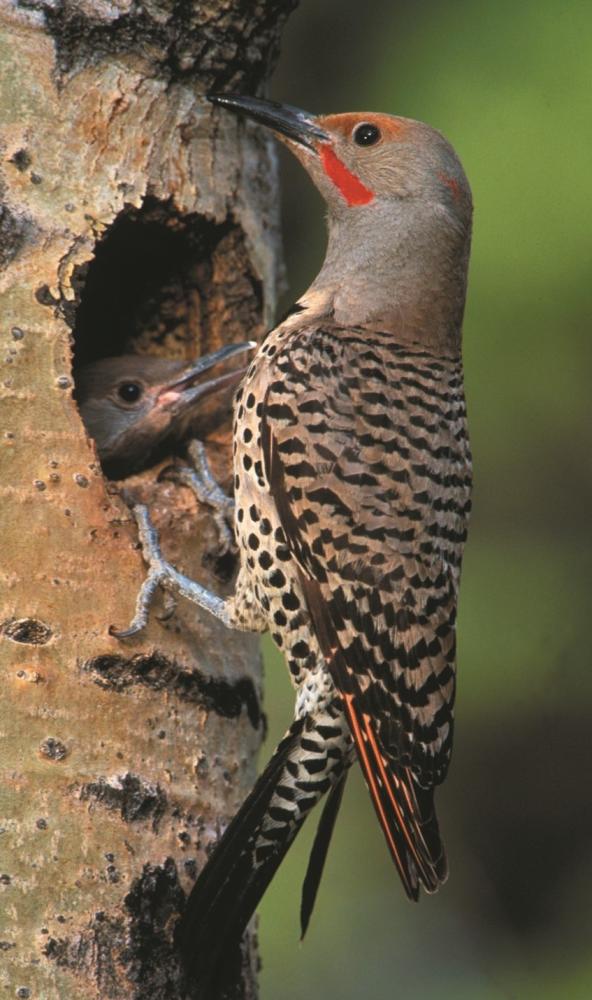March: Bright Colors and Nesting
 Two of our distinctive spring birds, Orioles and Black-headed Grosbeaks, begin to move into the area by the middle of the month. Make sure your feeders are clean and your pantry is stocked with favorite foods. If you want to attract the beautiful Orioles to your yard, show them a reliable source of nectar before they decide where to nest. The Grosbeaks want a ready supply of sunflower seeds.
Two of our distinctive spring birds, Orioles and Black-headed Grosbeaks, begin to move into the area by the middle of the month. Make sure your feeders are clean and your pantry is stocked with favorite foods. If you want to attract the beautiful Orioles to your yard, show them a reliable source of nectar before they decide where to nest. The Grosbeaks want a ready supply of sunflower seeds.
Left: Eucalyptus leaves highlight the colors of a female Bullock's Oriole (by Stuart Clark)
Western Bluebirds are here all winter, especially now that benefactors have put up bluebird boxes so they can breed. Ideal locations, from the Bluebird point of view, anyplace with big trees and wide lawns, such as golf courses, parks and cemeteries. There, the bluebirds can swoop over the lawns and catch the insects they love. March is when they start to pair off and use those bluebird boxes to raise chicks. Like all new parents, they need extra protein, especially mealworms. They'll consume the dried ones, but in spring, when demands on their energy are particularly high, it's good to give them fresh mealworms and a seed mix, such as our Bluebird Bugberry Blend, that will keep them chirping.

Right: Dark-Eyed Junco may be scouting nesting locations
Is your yard noisier than usual in the mornings? Spring brings a cacophony of bird calls as birds signal each other for mating, claiming territory and setting up the nest together. Most active are familiar neighborhood faces, such as Dark-Eyed Juncos, Bushtits and House Finches, all of which are firing up their vocal cords in the nesting frenzy. You often will see them in twos. scouting out your yard as a possible nesting spot. A basic seed mix, such as our No Mess blends, is ideal food for these parents to be.
Prepare for change this month, as winter moves into spring. Winter regulars, such as the White-Crowned Sparrows, will stay for another couple of months, but the spring migration for some species is already under way.
They start early, so the first clutches of Anna's and Allen's Hummingbirds are fledging. They grow up quickly, and many of the hummingbirds crowding your feeders are the newly matured youngsters out on their own.
Below: A newly fledged Anna's looking for nectar

Lesser Goldfinches also start to are gather nesting materials this month. Their nests are tiny soft cups, hidden in dense bushes or willows. Their appetites for nyjer and sunflower chips are at a peak as they prepare for eggs and chicks.
It's not too late to start participating in Project FeederWatch, which continues past the end of March. The data you collect is important for monitoring how birds are thriving or surviving around you. The data could be especially important after this year's fires.

Right: A Northern Flicker feeds a chick in the nest hole
Watch for Northern Flickers, large beautiful woodpeckers, at your suet feeders. Many migrants can be seen in March as they move to more-remote areas, such as conifer forests, to breed. They eat the rich suet to fuel their journey to the mountains, which are more suitable for breeding than the increasingly urban coast.
Tiny California Gnatcatchers arrive at the equally tiny remnants of coastal scrub lands where they breed. Fluffy pale gray feathers, a black cap and long black tail identify the males Throughout the breeding season, which ends midsummer. These birds live only along the SoCal coast, making it crucial that the bits of coastal scrub left be preserved to ensure their survival.
Winter often brings unusual visitors, some for multiple winters. The LA Audubon's rare-bird blog reported a returning wintering Pacific Golden Plover in the Ballona Wetlands area. The bird has been present continuously since January.

